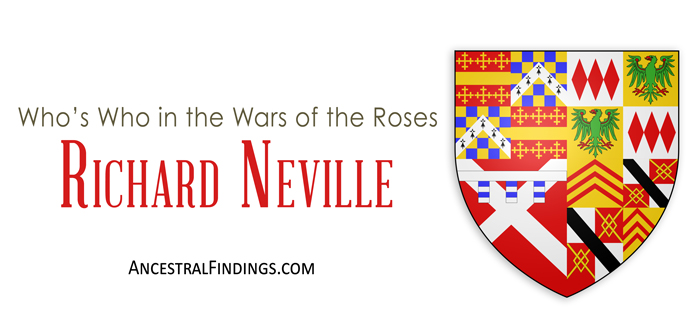Not many women can say they were the mother of two kings, the grandmother of another, and the grandmother of a queen, as well. But, Cecily Neville can legitimately claim all of these things and more. An important player in the Wars of the Roses, Cecily was part of the conflict from the very beginning until a decade after its end. Only a handful of people, all of them women, who were top players in this three-decade conflict made it all the way through, and Cecily was one of them; she even outlived all but two of her thirteen children, including all of her sons.
Cecily didn’t always have an easy time of it during the Wars of the Roses and made many sacrifices to the cause, including a husband and three of her four sons who survived to adulthood. But, she survived it, and saw many personal triumphs along the way, as well. She is often referred to as England’s greatest uncrowned queen. Here is what you need to know about Cecily Neville.
Cecily Neville: Duchess of York and Mother of Kings
Cecily was born into the powerful, noble, and influential Neville family of England in 1415, the youngest child of Sir Ralph Neville. Ralph had an astonishing twenty-two children among two wives, and it is interesting that, in an age when daughters were considered of little use other than for marriage alliances, his youngest child, and a daughter no less, was the most successful (and the most remembered by history) of all of his vast brood of offspring.
Cecily’s mother was Ralph Neville’s second wife, Joan Beaufort. Joan was a granddaughter of King Edward III through his son, John of Gaunt, and John’s third wife, Katherine Swynford. This made Cecily a great-granddaughter of a king on her mother’s side.
When Cecily was nine years old, her father betrothed her to his ward, thirteen-year-old Richard Plantagenet, 3rd Duke of York, a distant relation of the ruling Plantagenet family, whose members had sat on the English throne since the 1100’s. Though such a marriage could not be made legal until both parties were old enough to consent, it effectively took young Cecily off the noble marriage market and made an excellent and potentially very profitable match for her. Cecily and Richard grew up together in the same household, and, unlike many arranged marriages between young people of the time, they seem to have genuinely fallen in love with each other. Therefore, when the time came for them to give their consent to be wed, they did so, not because of family pressure or expectations, but because they actually wanted to.
Richard Plantagenet and Cecily Neville were married when Cecily was fourteen years old and Richard was eighteen. It took nine years for them to conceive their first child, and it was believed for a long time that Cecily was barren. However, once she conceived, she kept conceiving, giving Richard thirteen children, seven of whom lived to adulthood.
Cecily’s husband believed himself to be the rightful king of England, as he also descended from Edward III, but through a senior line to the current king, Henry VI. Because Richard was Duke of York, his supporters became known as Yorkists. Supporters of Henry VI were known as Lancastrians, after the founder of their line, and claimed Henry’s claim was greater because his line descended through a man, while Richard’s descended through a woman.
After Henry VI went mad, Richard was named Protector of the Realm, but he had a lot of enemies at court. When Henry regained his senses, Richard was banished. Henry had other bouts of madness, though, and with a few military battles and skillful negotiation, Richard convinced Henry VI to name Richard and his sons as heirs to the throne, rather than Henry’s own son. Cecily was at that point considered a queen in waiting.
The Lancastrians weren’t done fighting for their king, though, and Richard, along with Cecily’s second surviving son, seventeen-year-old Edmund, was killed in a battle with them. Cecily’s youngest sons were sent to the continent in Burgundy for their protection, and her eldest son, Edward, won a decisive victory over the Lancastrians while they were gone, and was crowned King Edward IV. Cecily moved into the queen’s quarters at Baynard Castle, which was Yorkist headquarters, and adjusted her coats of arms to include the royal arms of England, which was her way of saying she was the uncrowned rightful queen before her son took the throne.
Her influence was so important to the Yorkist cause that even after Edward IV married Elizabeth Woodville and made her his queen, he built new queens quarters for her, and let his mother continue living in the original quarters.
Cecily did not like Elizabeth Woodville, and did all she could, including machinations with her nephew, to get Edward to annul the marriage and marry a foreign princess. When Edward refused, Cecily seems to have given her consent to a rumor being put to the public that she had an affair with an archer while she and her late husband were in France, which resulted in Edward’s birth, which would disqualify him from being king. She openly favored her third surviving son, George, and suggested to her nephew, who had an instrumental role in Edward IV’s government, that George should be made the king, instead.
This only resulted in more battles, this time between Edward and George. Attempts were made to put George on the throne, including marrying him against Edward IV’s express command to his cousin, Isabel Neville (the eldest daughter of Cecily’s collaborating nephew, Richard Neville, Earl of Warwick, who was killed in a later battle against Edward IV). These attempts did not work, but they gave George, already spoiled since childhood by his mother, an overinflated sense of his importance to the kingdom. Edward IV was eventually forced to order George’s execution due to his reckless and openly disrespectful behavior toward him and Elizabeth Woodville. Cecily never seems to have quite forgiven Edward for killing George, as is evidenced in her later treatment of Edward’s children with Elizabeth Woodville.
Edward IV died of an illness he seems to have caught while out fishing in the rain with his friends. This left Elizabeth Woodville and her children in a precarious position. Edward’s eldest son, the 12-year-old Edward V, was technically king, and was, for a few months, treated that way. However, he was never crowned, and eventually disappeared in the Tower of London along with his younger brother, Richard of York; even in Cecily’s lifetime, no one knew (or said) what happened to the two boys, one a king, one a prince, who was Cecily’s grandsons. Their fate remains a mystery today.
Meanwhile, Cecily’s youngest and last surviving son, Richard, declared Edward IV’s marriage to Elizabeth Woodville invalid and all their children illegitimate and had himself declared King Richard III. He and Cecily appear to have been quite close, as a number of letters between them from Richard’s time as king survive. He seems to have visited her often, and she advised him on royal matters.
Richard III was married to Anne Neville, the sister of his brother George’s wife, Isabel. They had one son together, and their marriage appears to have been one done for love, though political benefits came to Richard III from the marriage, as well as part of a vast fortune. Unfortunately, Richard was only king for two years, and during that time, Anne and his son both died. Richard had three known illegitimate children, but they could not inherit the crown, and none are known to have left descendants. After losing his wife and heir, Richard had to contend with a promised invasion of England by the last legitimate Lancastrian heir, Henry Tudor. This was before he had a chance to take a new bride and produce more heirs, though he was rumored to be looking at a Portuguese princess as his next wife.
Richard III was killed on the battlefield while fighting Henry Tudor’s army. Cecily had now lost all of her sons, though she had some daughters left. Her granddaughter with her eldest son, Edward IV, married Henry Tudor after he re-confirmed Edward and Elizabeth Woodville‘s marriage and made her legitimate again. Cecily’s granddaughter was now queen of England, just as two of her sons had been king, and one of her grandsons had been king in name only (the mysteriously disappeared Edward V).
After Richard III died in 1485 and Cecily’s granddaughter became queen to Henry Tudor (Henry VII), Cecily had two daughters still living, and dozens of grandchildren across all of her children. With the Wars of the Roses over with the marriage of Henry Tudor to her granddaughter, Elizabeth of York, Cecily devoted her time to religious pursuits, and it is from this later period in her life where she gains her reputation for piety. She died in 1495, a decade after the war ended, and was buried in the same tomb as her husband and second son, Edmund. She lived long enough to see the births of four of her great-grandchildren with the new king and queen, including the future Henry VIII. In fact, all monarchs who have sat on the throne since Henry VIII have been direct descendants of Cecily Neville.






